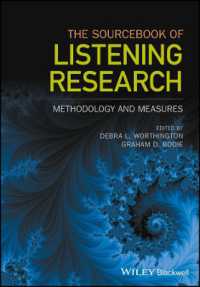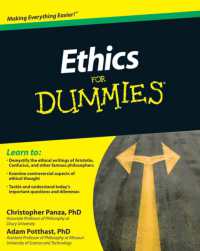Full Description
A thoroughly revised edition of this definitive book, the most comprehensive study of drawing ever published.
Drawing has always been an inseparable part of art-making, but its role has been subjected to increasing scrutiny in recent decades. Admiration for readymades, the endless possibilities of new technologies, and the idea of artist-as-performer has shifted attention away from the traditional study or sketch. The Primacy of Drawing addresses emergent practices of drawing within a richly illustrated trans-historical context and proposes new ways to approach the drawings of artists, as well as the ideas and theories that inform their work.
Beginning with a consideration of ancient myths about the origins of drawing, Deanna Petherbridge examines the polarities of open-ended sketches and highly formalized studies that constitute a drawing continuum: graphic parameters within which artists continue to experiment. She examines the economy of drawing, that is, its qualities of line and mark, and analyses strategies of making, composing and inventing drawn images. The teaching of drawing in academies has led to the production of complex theories about copying, hierarchies of genres and the centrality of the expressive body. The manner in which satire, sexuality or play generate compositional strategies reveals the thinking of Petherbridge as a teacher, who was concerned for many years with the hows and whys of visual thinking.
The book is both a much-needed history of practice and a rich resource for anyone interested in drawing.
Contents
Preface: Some Thoughts about Tokenism • 1. The Primacy of Line • 2. The Cult of the Sketch • 3. Drawing towards Finish • The Linear Economy • 4. Drawing Strategies • 5. Material Traces • 6. Line as Movement and Touch • 7. Diagrams and Lines of Construction • 8. Virtual Lines and Affective Correspondences • Drawing as Discipline • 9. The Gendered History of Learning to Draw • 10. Bodies in Pieces: Drawing and Anatomical Manuals • 11. The Complex Contradictions of Copying • Drawing the Self • 12. Drawing the Drawer • 13. The Drawer as Embodied Observer of the Natural World • 14. Drawing the Studio: Power and Legitimation • Drawing the Other • 15. Charged Lines and Homely Bodies • 16. Drawing Death and Desire • 17. War Migration and Global Warming







